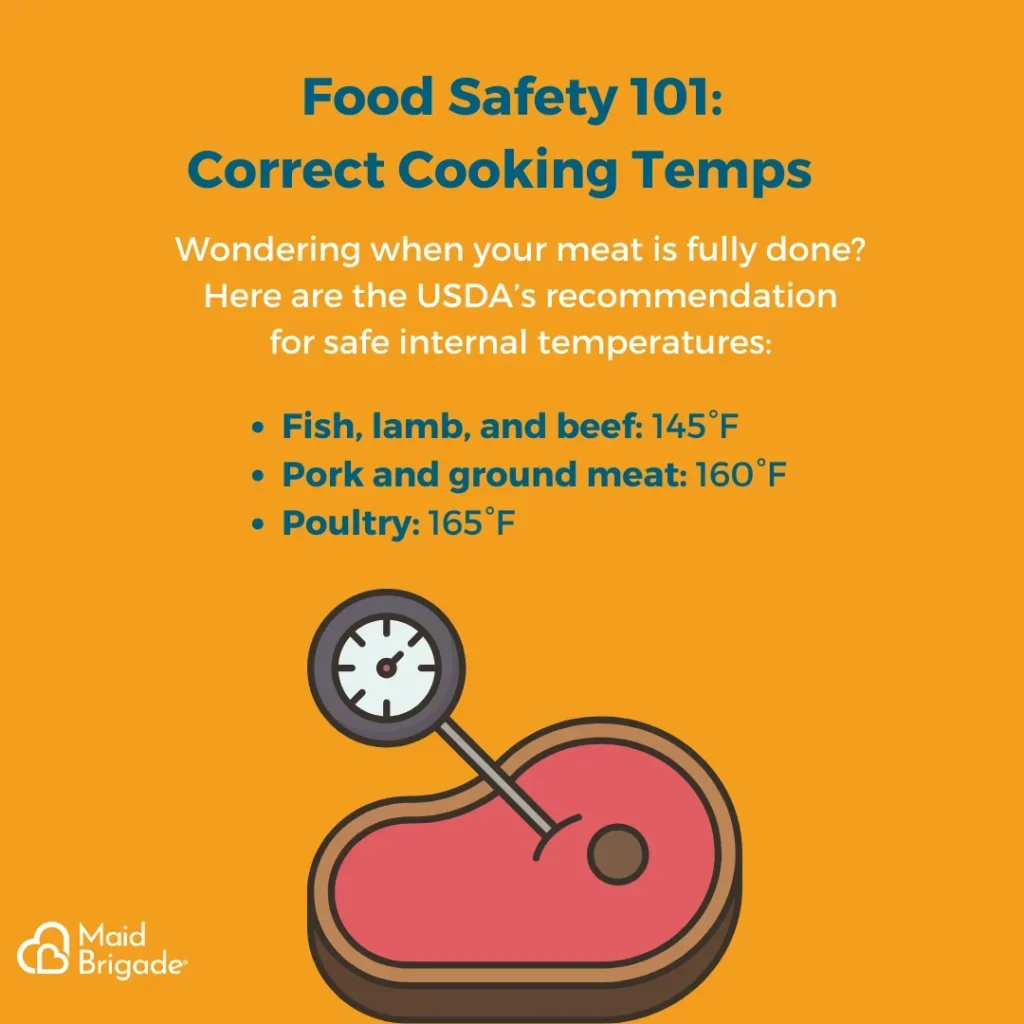
A clean kitchen isn’t just about hygiene. It’s about creating a space where life’s best moments unfold. Picture this: You’re baking cookies with your kids, laughing as flour dusts the countertops, without a second thought about the mess. Or you’re unwinding after a long day, sitting down to a home-cooked meal without worrying what your kitchen looks like. When your kitchen is effortlessly clean, you have the freedom to focus on what truly matters: savoring the moments that make a house a home.
As we’ll explore in this blog, there are steps you can take (in addition to scheduling regular and deep cleanings with Maid Brigade) to keep your kitchen spotless, safe, and perfectly arranged for a variety of cooking activities and the joy that they bring.
Step into a Fresh Start
Before you even touch a single ingredient, a clean kitchen sets the stage for a stress-free cooking experience. Start with the simplest step: clean hands. Washing thoroughly with warm, soapy water for at least 20 seconds eliminates bacteria and keeps your food safe. Plus, with Maid Brigade’s expert cleaning services ensuring your counters and sinks are sanitized, you can confidently reach for fresh ingredients without worrying about hidden germs.
A Refrigerator That Works for You
Your fridge does more than just store food. It protects your family’s health. Picture a perfectly organized refrigerator: raw meats sealed and stored on the bottom shelf, crisp vegetables neatly arranged, and no forgotten leftovers lurking in the back. Keeping your fridge at 40°F or lower ensures food stays fresh, and a quick wipe-down prevents spills from turning into sticky surprises.
And what if you hire Maid Brigade to tackle regular deep cleanings? It’s no surprise that your fridge will remain a spotless haven for fresh ingredients, ensuring your food is as clean as your kitchen.
Stress-Free Food Prep
Imagine effortlessly moving through your meal prep, grabbing a color-coded cutting board—green for vegetables, red for meat—without pausing to think about cross-contamination. With everything in its place and a habit of washing utensils immediately after use, your cooking space stays as fresh as your ingredients. When it’s time to cook, you can trust that your kitchen thermometer ensures every bite is safe and delicious.
A well-kept kitchen is a worry-free kitchen, and with Maid Brigade maintaining your kitchen’s cleanliness, these small but essential habits become even easier to uphold.

Source: USDA
Enjoy the Heart of Your Home
The kitchen isn’t just a place to cook; it’s the heart of your home. It’s where you sip coffee in the morning light, where family and friends gather to share stories, and where the best conversations happen over a homemade meal.
Even with the best intentions, keeping a kitchen spotless can be a challenge. But what if you didn’t have to think about it? What if, instead of scrubbing counters, you were setting the table for a cozy dinner? Instead of deep-cleaning, you were pouring a glass of wine and truly relaxing? What if your kitchen was always guest-ready without a second thought?
This is where Maid Brigade comes in. Our professional cleaning services ensure your kitchen is not only clean but also sanitized using our non-toxic, eco-friendly PUREcleaning® system. Imagine the peace of mind that comes with a sparkling kitchen, always ready for your next culinary masterpiece.Let us handle the cleaning while you focus on the joys of cooking and spending time with your family. Contact your local Maid Brigade today to schedule a kitchen cleaning that will leave your space shining and stress-free.


